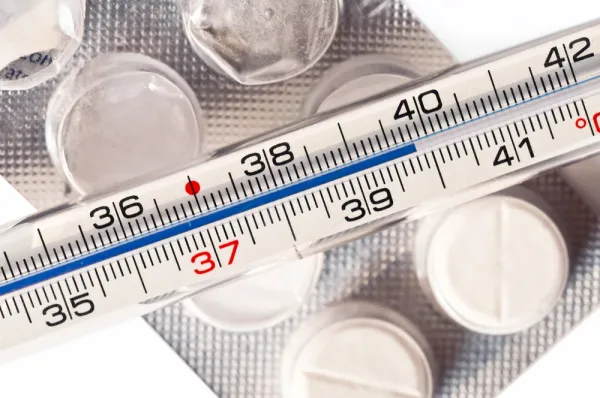Test Your TP Coding Skills With 3 Scenarios

Tip: Resident's involvement requires 'G' modifier
1. Rely on ‘Key Portions’ to Code Dual Services
When a resident and a TP each provide part of an E/M service, you should combine their work using the TP guidelines. “The TP must document that he or she personally provided the key portion of the service and reference the resident’s note,” says Bonnie Salvatore, CMA, CPC, CMC, CMOM, CMIS, a coding consultant and educator based in Stockbridge, Ga.
2. Follow E/M Guidelines When TP Works Alone
The use of the TP guidelines as in the above resident and TP example hinges on both physicians’ involvement in the examination. The resident must be present during the TP’s patient evaluation and must perform a complete E/M service, says Julie Keene, CPC, with University of Cincinnati Physicians. Otherwise, “the TP needs to document the entire encounter as required per the documentation guidelines as if he were in a non-teaching environment,” she says.
3. Check Procedure Notes for TP Presence
Look out for one additional documentation point when reporting minor procedures, such as simple suture for an internist acting as TP. Make sure the physician documents that he directly supervised the entire procedure, Menchaca says. When a resident performs a minor procedure (one that lasts less than five minutes), Medicare guidelines require the TP’s presence for the entire procedure.
Are you upcoding teaching-physician services? Using these documentation rules will audit-proof your internist’s services and procedures.
“Teaching facilities have come under the scrutiny of the Office of the Inspector General in recent years,” says Victoria Menchaca, CCS-P, CPC, senior consultant with Reimbursement Specialist in Los Alamitos, Calif. When your internist works as a teaching physician (TP) and supervises a resident’s services in an office or hospital setting, Medicare requires you to report your physician’s work using the teaching-physician rules.
Example 1: A resident without the TP present sees a new patient for nasal discharge, cough and low-grade fever. The resident conducts an expanded problem-focused history and exam, and uses straightforward medical decision-making to prescribe amoxicillin for the patient’s upper respiratory infection (URI). The TP identifies the examination as the key portion and performs an expanded problem-focused exam that the resident attends. He also notes that he agrees with the resident’s treatment plan in the patient’s chart.
Rule: Because the internist performs and documents the key portion of the E/M service, you should select the outpatient office visit level that represents the highest components the resident and TP performed.
They performed an expanded problem-focused history, an expanded problem-focused examination and straightforward medical decision-making. Therefore, you should report 99202 (Office or other outpatient visit for the evaluation and management of a new patient, which requires these three key components: an expanded problem-focused history; an expanded problem-focused examination; and straightforward medical decision- making), along with ICD-9 code 465.9 (Acute upper respiratory infection).
Key: In a non-Veterans Affair (VA) setting, don’t forget to attach modifier GC (This service has been performed in part by a resident under the direction of a teaching physician) to 99202. The modifier tells the carrier that a resident performed part of the office visit service, Menchaca says. “The teaching physician can supervise up to four residents at any given time and must be immediately available, meaning in the same office suite/floor.” Attention, VA coders: See new modifier instructions below.
Tip: The TP doesn’t have to duplicate the resident’s progress notes, but should refer to the resident’s notes and state that the TP reviewed the resident’s medical documentation and agrees with the diagnosis. Proper documentation could state, “I saw and evaluated the patient. I reviewed Dr. Resident’s note and agree with her assessment and plan, including the patient’s acute URI necessitating antibiotic treatment.”
A similar “form” note may suffice in an electronic medical records (EMR) environment. “The TP may use a macro as the required personal documentation if he adds it personally in a secured (password-protected) system,” according to CMS. But the EMR note “must sufficiently describe the specific services furnished to the specific patient on the specific date,” Transmittal 811 states.
Example 2: A TP without a resident personally performs a comprehensive history, a detailed examination and low-complexity medical decision-making on a hospital inpatient who presents with infectious mononucleosis and dehydration.
Action: Because a TP personally performs all the required elements of an E/M service without a resident, code the hospital visit as you normally would in a non-teaching setting. The TP performs components consistent with level-one initial hospital care. Therefore, you should assign 99221 (Initial hospital care, per day, for the evaluation of a new or established patient …) with the ICD-9 codes for mono (075, Infectious mononucleosis) and dehydration (276.51, Disorders of fluid, electrolyte, and acid-base balance; volume depletion; dehydration).
Note: Teaching physicians providing E/M services with a GME program granted a primary-care exception may bill Medicare for lower- and mid-level E/M services (new patient codes 99201-99203 and established patient codes 99211-99213) that a resident furnished in the absence of a TP. For how this system works, see February 2004 Internal Medicine Coding Alert, “4 Steps Reduce Denials for Teaching-Physician Services.”
Example 3: Suppose your internist supervises a resident during a suture of a 2.7-cm arm wound (12002, Simple repair of superficial wounds of scalp, neck, axillae, external genitalia, trunk and/or extremities [including hands and feet]; 2.6 cm to 7.5 cm). Report 12002 with modifier GC to show that the TP was in attendance, although he didn’t perform the procedure.
Either party’s notes may demonstrate the TP’s physical presence. Appropriate TP-supervised minor procedure entries include:
By TP:
• “The entire simple repair was performed in my presence.”
By resident:
• “Dr. Jones was present for the entire nasal foreign- body removal.” (30300, Removal foreign body, intranasal; office type procedure with 932, Foreign body in nose.)

